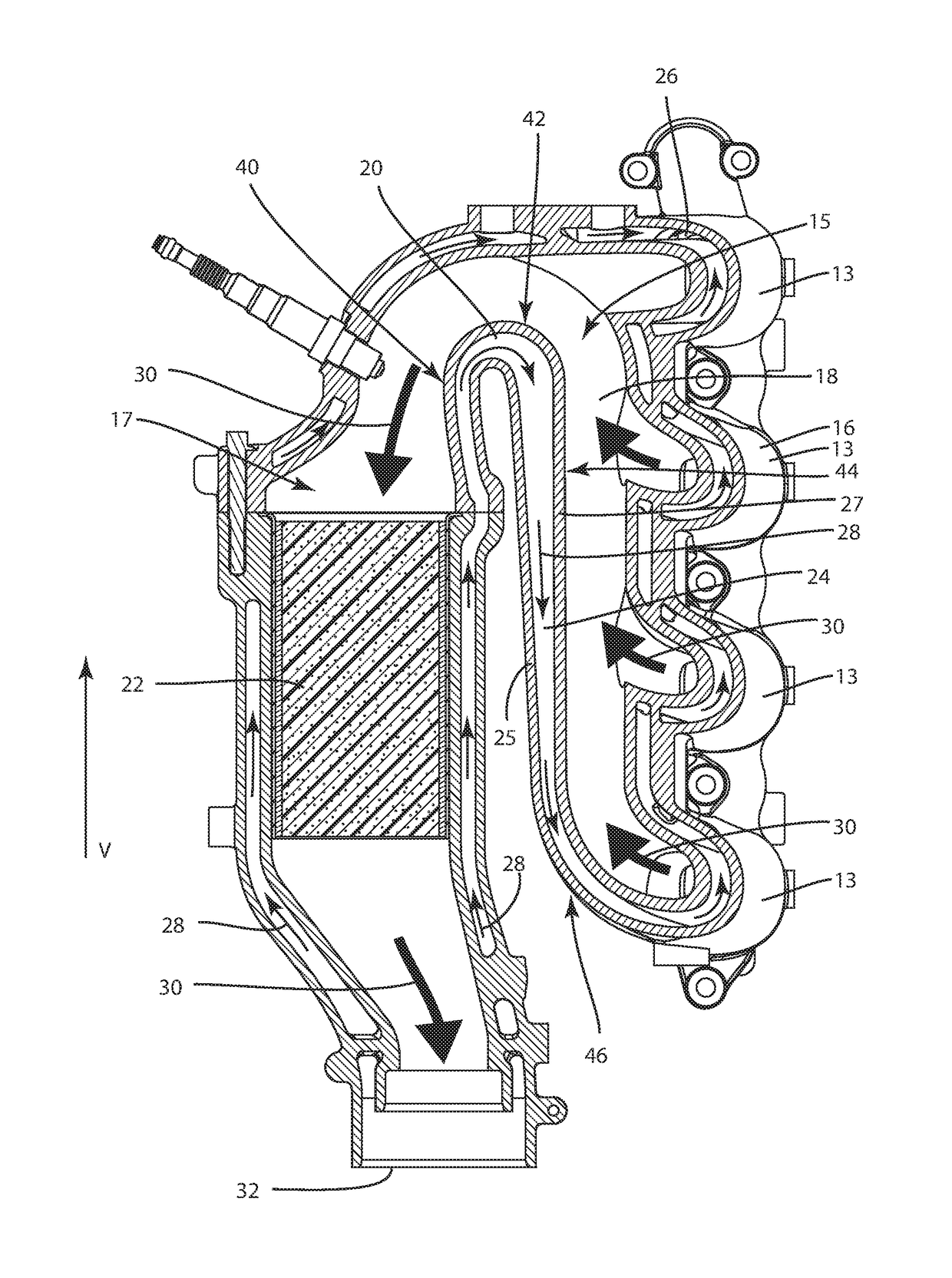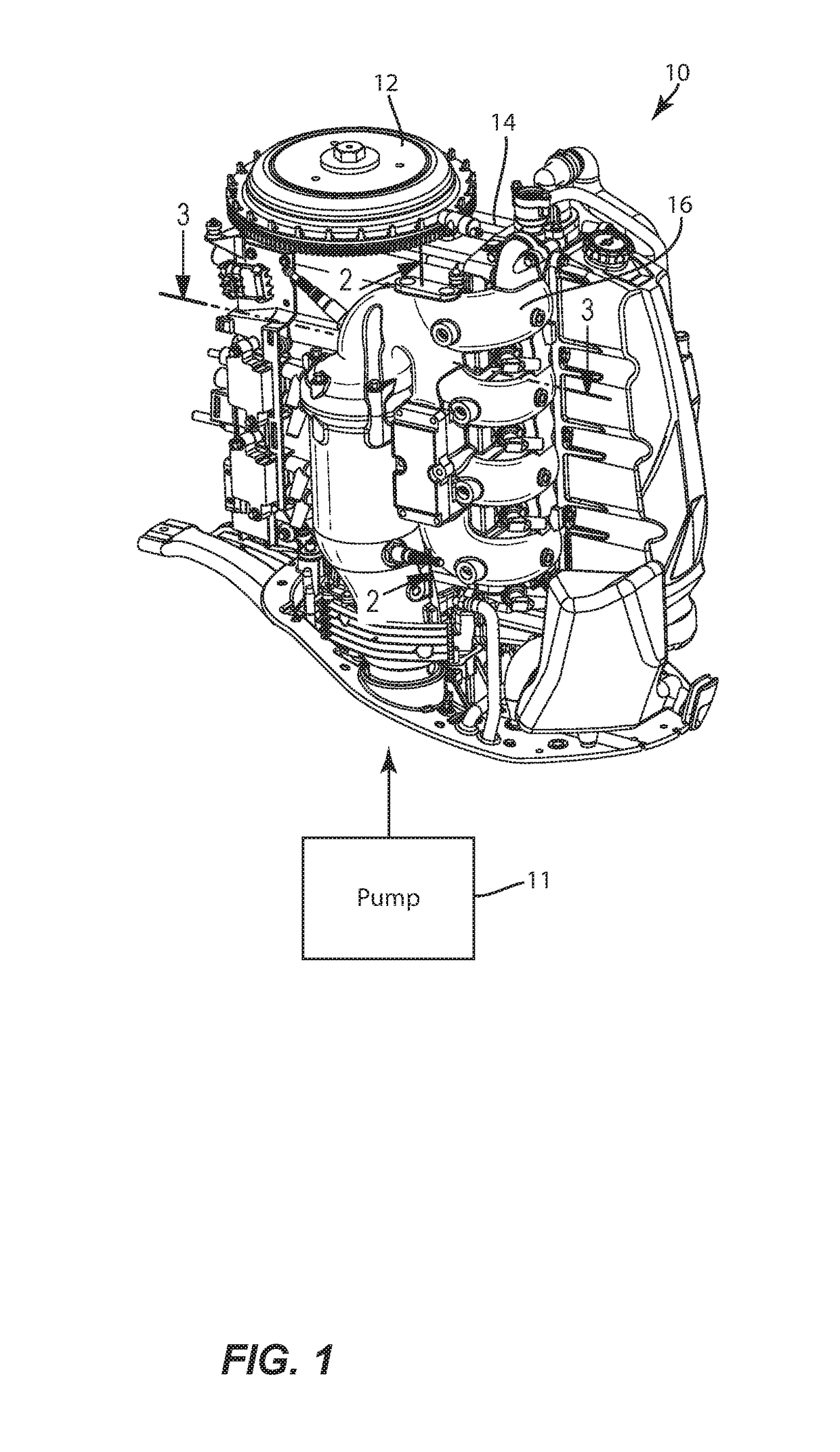Converging cooling system cross section
a cooling system and cross section technology, applied in the field of marine engines, can solve problems such as overcooling of certain parts of the engine, and achieve the effect of reducing the cross sectional area
- Summary
- Abstract
- Description
- Claims
- Application Information
AI Technical Summary
Benefits of technology
Problems solved by technology
Method used
Image
Examples
Embodiment Construction
[0025]FIG. 1 demonstrates the conventional engine 10 that includes the system for cooling described herein. The engine 10 may be a marine engine such as an outboard engine, an inboard engine or an inboard / outboard stem drive engine. As one of ordinary skill in the art will readily understand, the invention includes conventional components such as the flywheel 12, engine block 14, and exhaust manifold 16. The system for cooling an engine of a marine propulsion system of the present application focuses on the engine block 14 and exhaust manifold 16.
[0026]Turning now to FIG. 2, therein is shown a cross section of the engine 10 along lines 2-2 of FIG. 1. FIG. 3 demonstrates a cross sectional view along line 3-3 of FIG. 1. Turning now to FIGS. 2 and 3, the exhaust manifold 16 includes a plurality of vertically-aligned exhaust runners 13 that are configured to horizontally convey the exhaust gases from the engine 10 and an exhaust passage 18 for expelling exhaust gases from the combustion...
PUM
 Login to View More
Login to View More Abstract
Description
Claims
Application Information
 Login to View More
Login to View More - R&D
- Intellectual Property
- Life Sciences
- Materials
- Tech Scout
- Unparalleled Data Quality
- Higher Quality Content
- 60% Fewer Hallucinations
Browse by: Latest US Patents, China's latest patents, Technical Efficacy Thesaurus, Application Domain, Technology Topic, Popular Technical Reports.
© 2025 PatSnap. All rights reserved.Legal|Privacy policy|Modern Slavery Act Transparency Statement|Sitemap|About US| Contact US: help@patsnap.com



